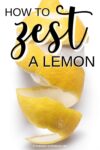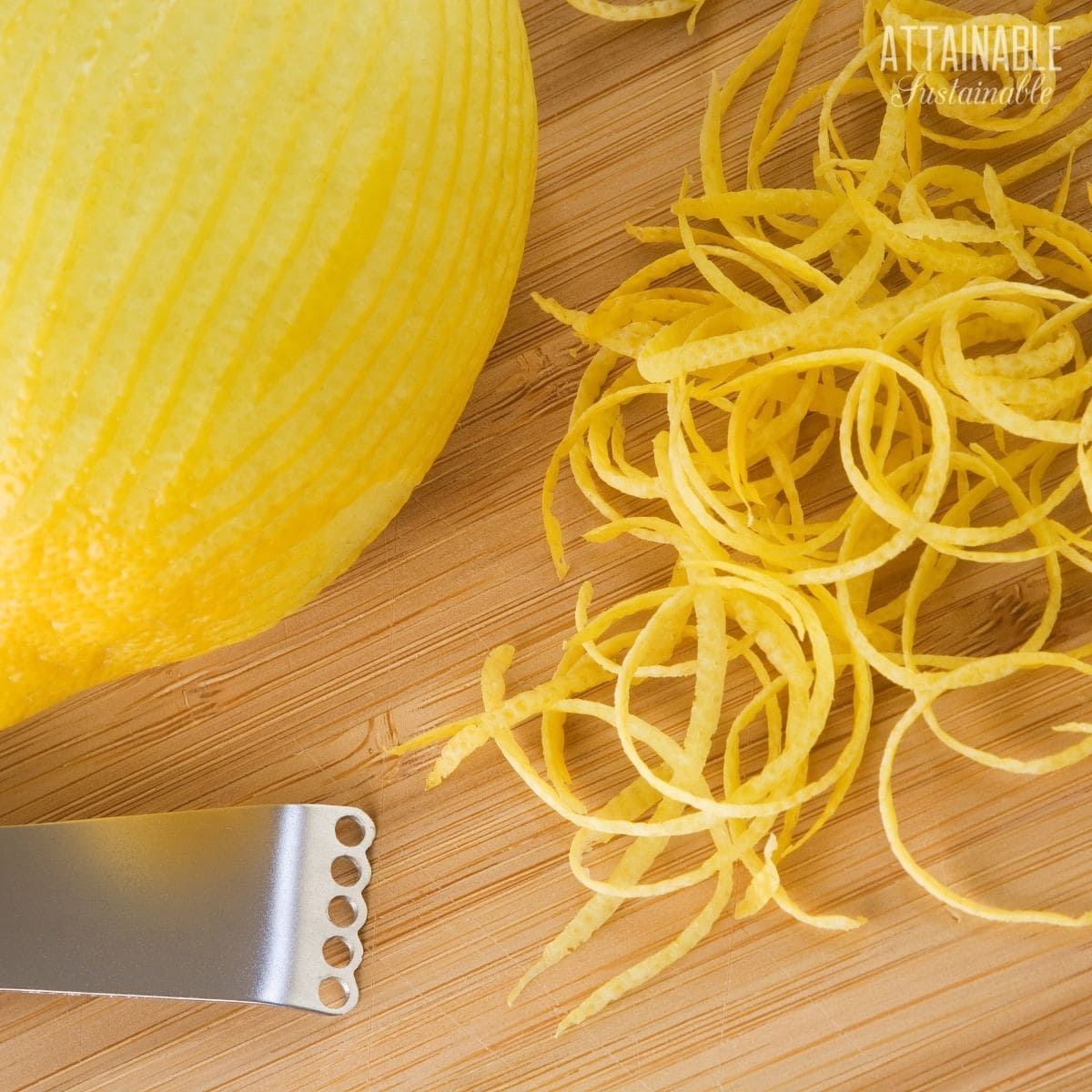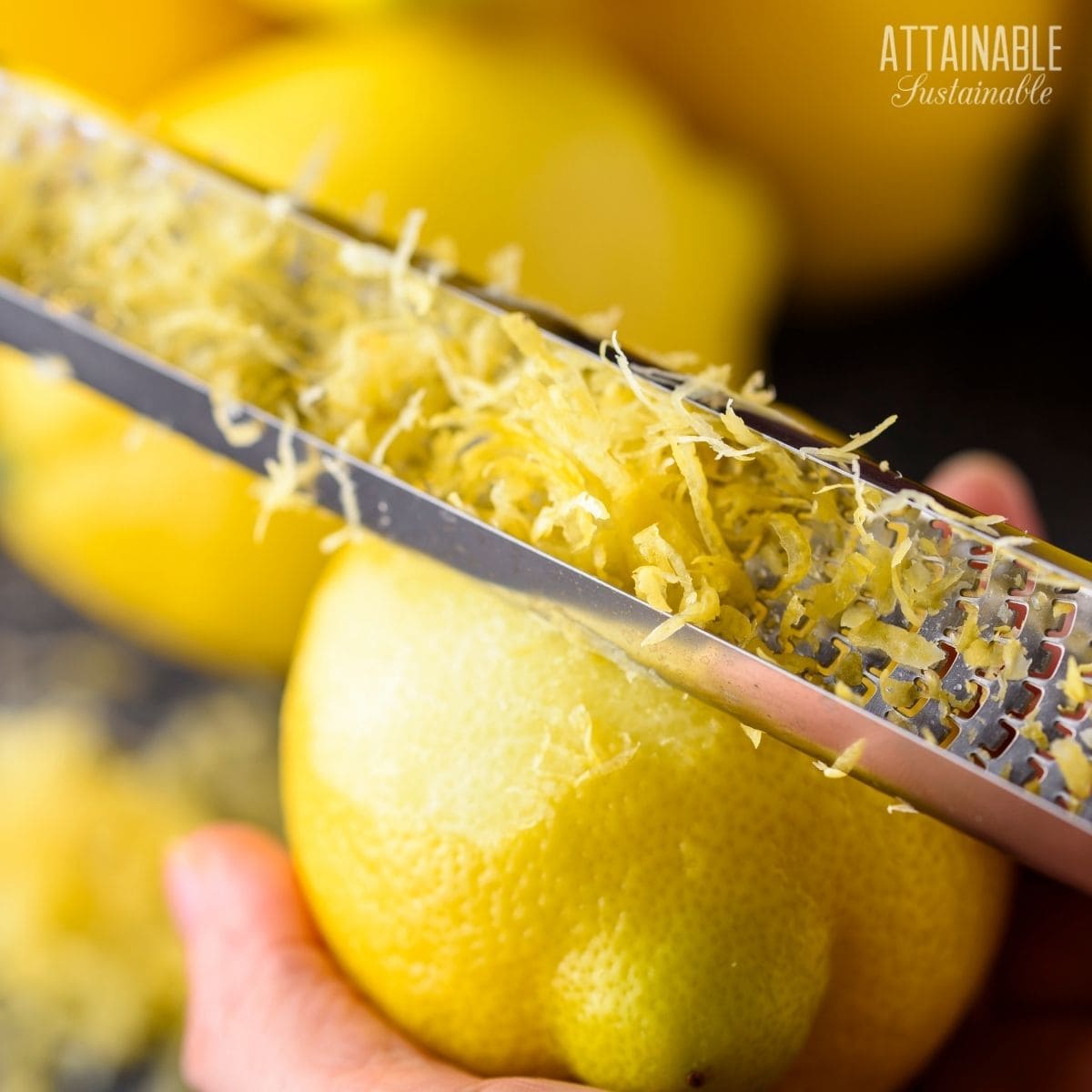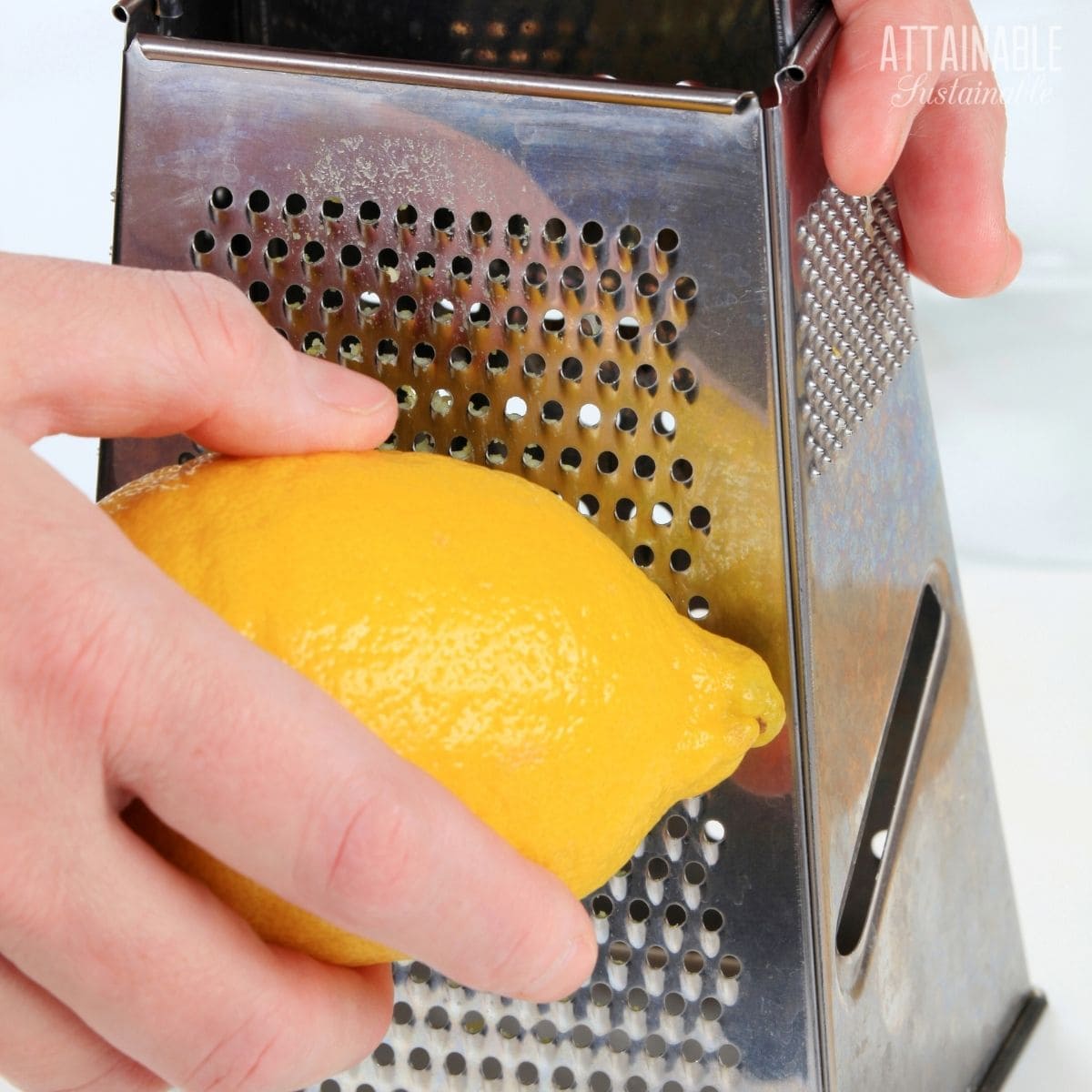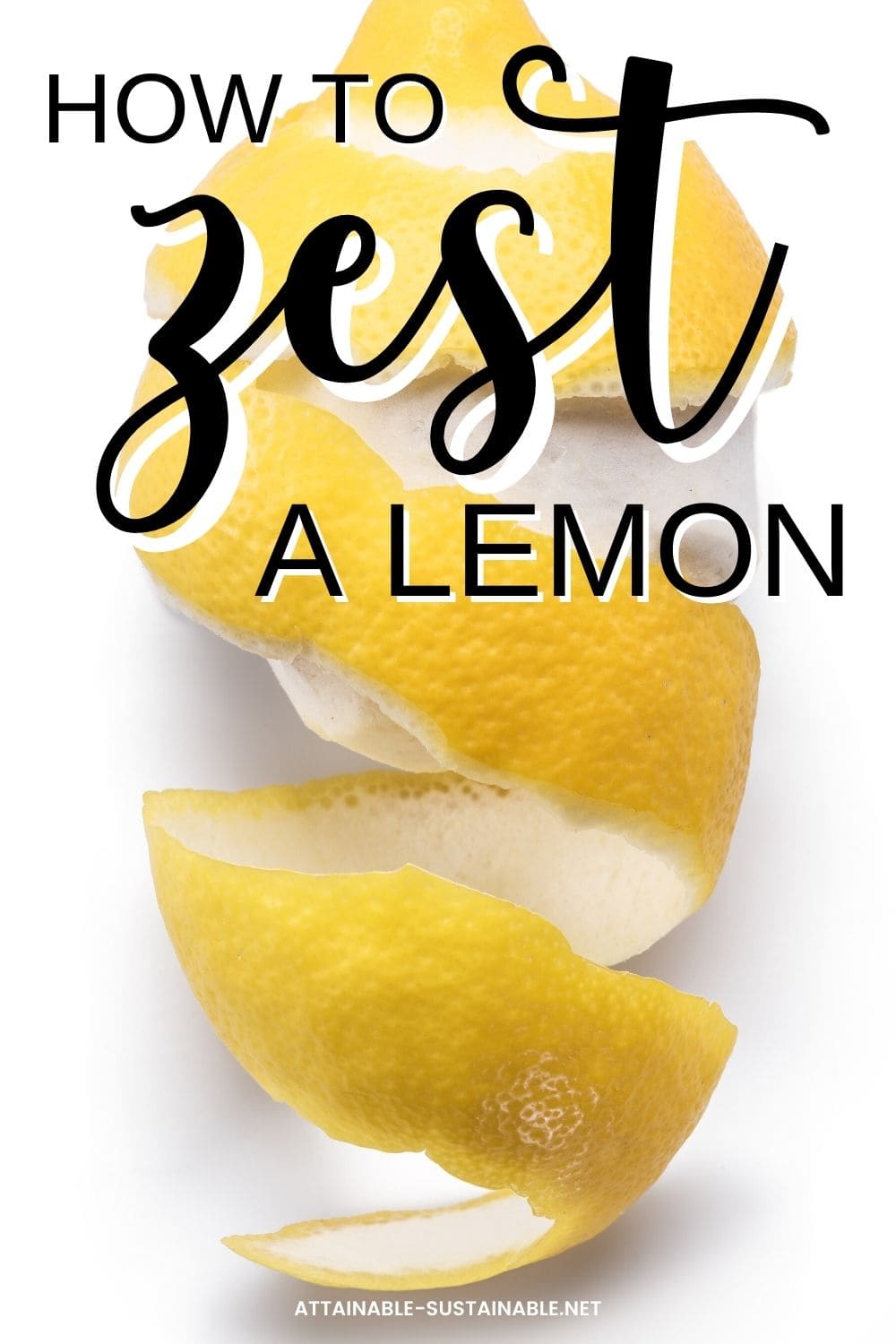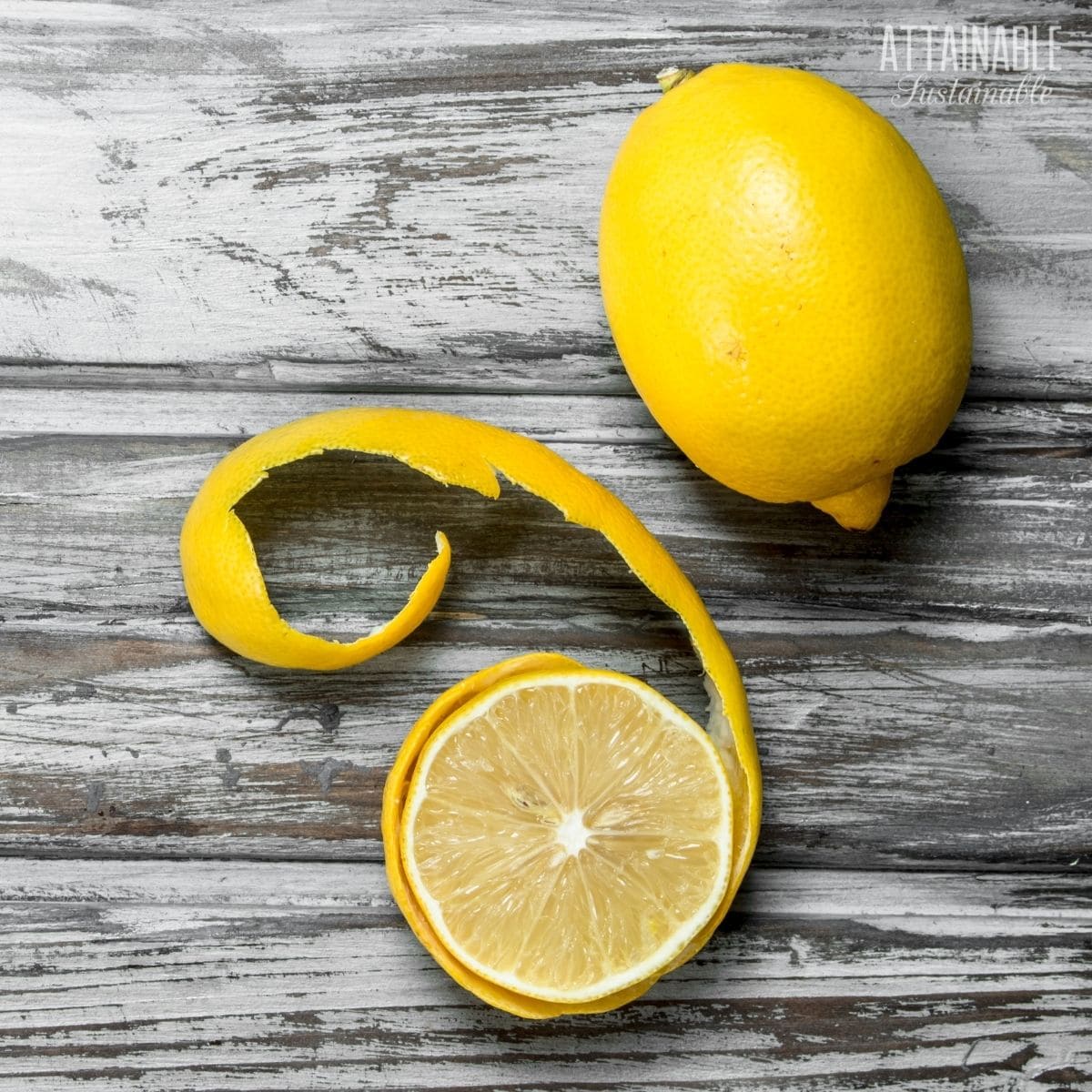Ready to add some flavor to your baking or meals? Time to learn how to zest a lemon!
If you’re new to cooking in the kitchen, welcome! This is part of my Kitchen Skills series, introducing you to some of the kitchen skills you’ll need to make delicious homemade recipes.
Read about more basic kitchen skills here.
What is lemon zest?
Zest is different from lemon peel or lemon skin, which includes both the outer layer — the yellow part — and the bitter white pith. The zest is just the yellow-colored part of the fruit and full of flavorful, aromatic oils. Using this ingredient in recipes packs a punch of lemon flavor.
You can use this method with other citrus as well.
You’d use this as an ingredient when you want lemon flavor without the added liquid that comes with using juice. The zest of lemon is also used in making lemon marmalade.
The Handcrafted Pantry

Ready to DIY your pantry with more wholesome ingredients? Check out my ebook, The Handcrafted Pantry! Filled with delicious recipes for some of your favorite condiments, snacks, and toppings, it’s the guide you need to start skipping packaged products and embrace homemade.
How to zest lemons
When you zest a lemon, the fruit and juice inside is still usable. You’ll want to remove the zest from a whole lemon first, and then proceed to use the flesh of the fruit.
Once the lemon is zested, you’ll be able to use the flesh as you’d like, for fresh eating or making lemon juice or lemonade. Zesting lemons before you use the flesh is a frugal and delicious way to get the most out of the fruit!
Be sure to thoroughly wash and dry the lemon before you begin, especially if it’s a conventionally grown fruit that may have spray residue on it.
Choose one of the zesting methods below. and grate or peel the zest onto a cutting board or into a bowl, being sure to avoid removing the white pith below the zest.
There are a number of methods that can work, depending on how your kitchen is equipped.
Citrus zester
This is a very specialized piece of kitchen equipment. A professional chef would probably tell you this is the best way to zest a lemon, but personally, I like equipment that will do double duty in my kitchen, so I don’t have one of these. You can check out a zester here.
To use this tool, hold the lemon in one hand and drag it across the skin of the lemon. This results in long, slender curls.
Microplane
This is my preferred method for zesting lemon (or other citrus). A microplane allows you remove fine shavings from the outer part of the lemon skin, leaving behind the bitter pith. A microplane results in very fine zest.
To use it, drag a whole lemon over the microplane, rotating the lemon slightly as the yellow colore is removed. Work your way all around the fruit. It’ll take just a few minutes to zest an entire lemon.
A microplane is also good for finely grating hard cheeses like Parmesan and for fresh garlic.
Zest a Lemon with a Cheese Grater
Not every household has a microplane. If you have a box grater, you can use the smallest holes to zest a lemon. Again, drag a whole, unpeeled fruit over the microplane, moving the lemon slightly as the zest is removed. Continue in this manner until all of the lemon-colored skin is removed.
Vegetable peeler
Use a vegetable peeler to carefully remove just the yellow portion of the skin, creating lemon ribbons, thicker than you’d get with a zester.
You can use the ribbons in strips, or make smaller pieces by chopping them with a knife. This is the most time-intensive way to generate small bits of lemon zest, but if you are limited in kitchen tools, it works just fine.
The lemon twists are also great as a garnish.
Storing lemon zest
This flavorful ingredient is best used fresh, but if you have more than you can use, store it in an airtight container in the refrigerator for up to a week, or freeze for up to a month.
Recipes
Now that you know how, you’re going to want to use some of those golden flavor shreds! Try one of these recipes:
★ Did you love this recipe? Be sure to give it a star rating below! ★
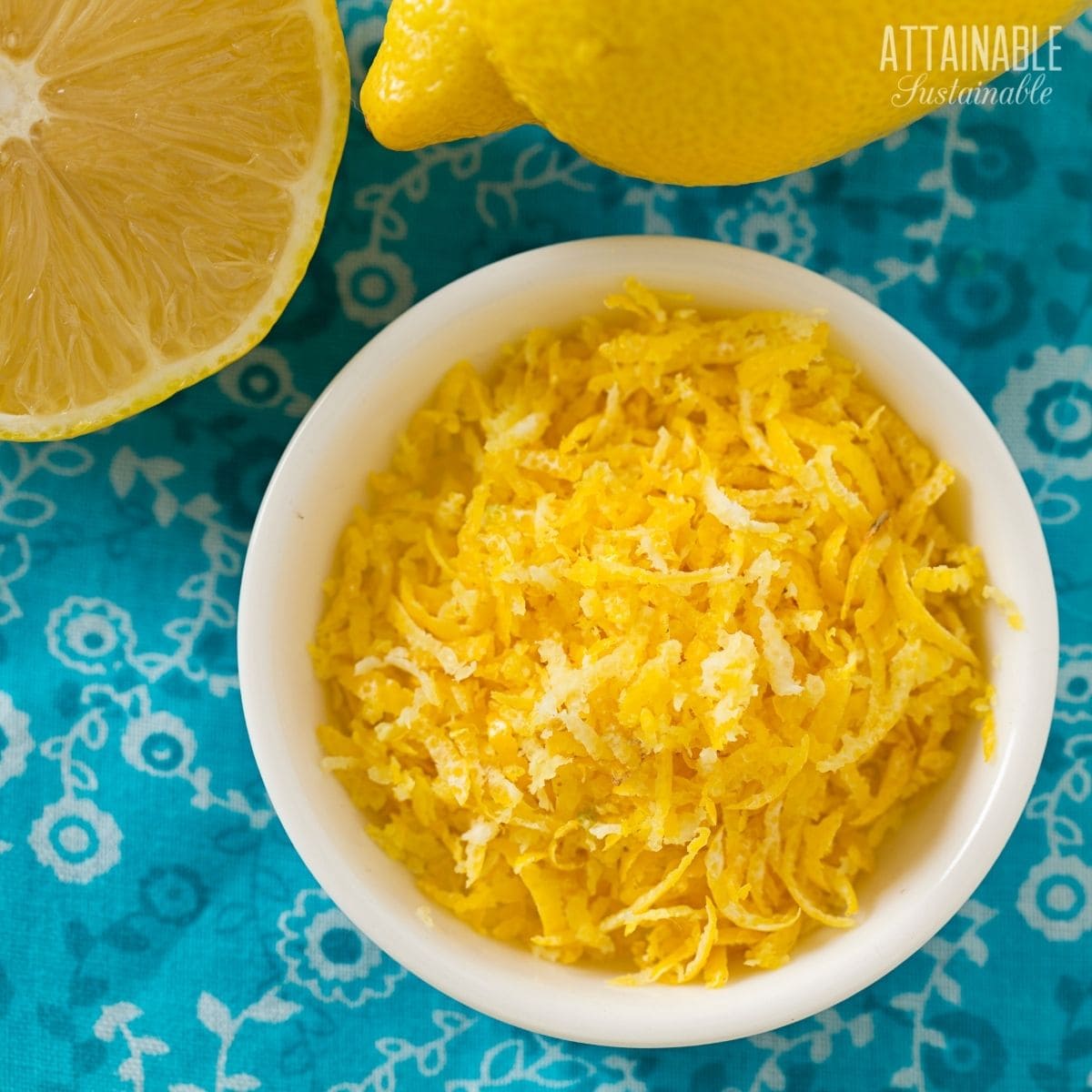
How to Zest a Lemon
Ingredients
- 1 lemon
Instructions
- Wash and dry a whole lemon.
- With a citrus zester: Hold the lemon in one hand and drag the zester across the skin of the lemon. This results in long, slender curls.
- With a microplane: Drag a whole lemon over the microplane, rotating the lemon slightly as the zest is removed. Continue in this manner until all of the lemon color is removed. It’ll take just a few minutes to zest an entire lemon.
- With a box grater: Drag a whole lemon over the smallest holes on the grater, rotating the lemon slightly as the zest is removed.
- With a vegetable peeler: Carefully remove just the yellow portion of the skin, creating lemon ribbons. You can use the ribbons in strips, or make smaller pieces by chopping them with a knife.
Notes
- This flavorful ingredient is best used fresh, but if you have more than you can use, store it in an airtight container in the refrigerator for up to a week, or freeze for up to a month.
- 1 lemon nets 2-3 tablespoons of zest.
